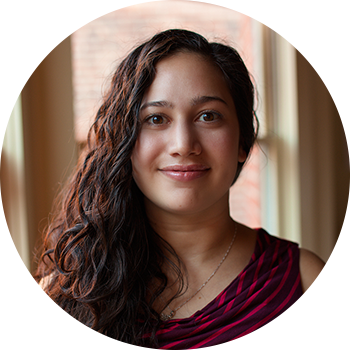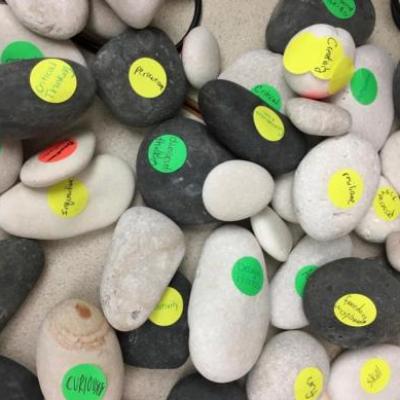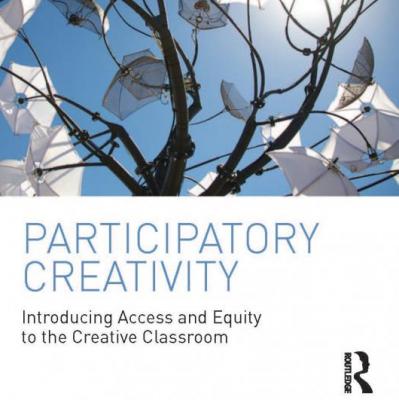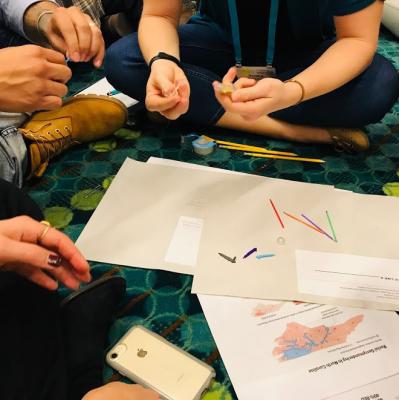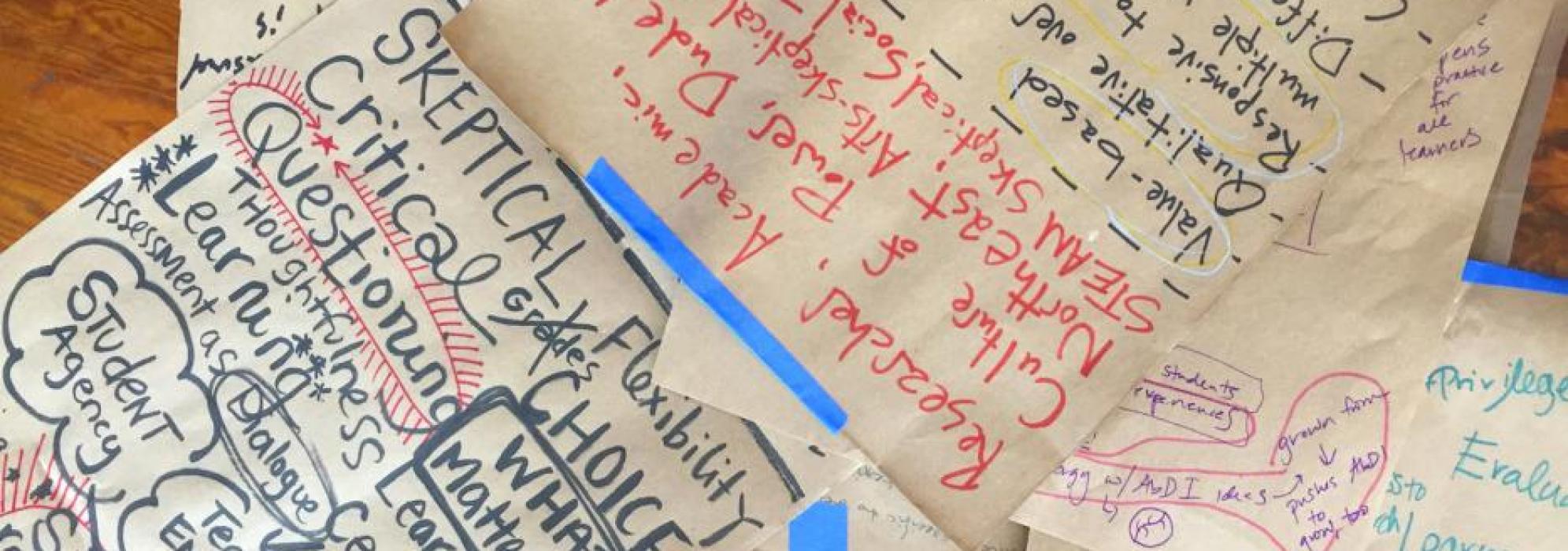
Framing a Value-based Approach to Documentation and Assessment for Maker-Centered Learning
Synthesizing recent conversations between AbD and the Oakland Leadership Team, AbD researcher Andrea Sachdeva proposes a values-based stance on documentation and assessment in maker-centered learning.
As many of you will know, the Agency by Design research team just began a second phase of work, focused on creating tools for documentation and assessment in maker-centered learning environments. Embarking on this work has prompted the team to carefully consider what this work will endeavor to explore—and what it won’t.
To some extent, the focus of this research phase is already articulated by the Phase II research questions, which asked us to consider: 1) how we can help learners make visible their abilities within the three core maker capacities of looking closely, exploring complexity, and finding opportunity, 2) how we can help teachers to qualitatively measure students’ performance within these capacities, and 3) how we can collaborate with students and teachers to design a suite of tools to support the development of maker empowerment. But within this scope of work, a great many decisions remain to be considered.
Today’s landscape of documentation tools in educational environments is extensive, including tools in both the analog and digital realms, frameworks for capturing, interpreting, and sharing documentation, and practices ranging from those that capture discrete “snapshots” of learning to those that chronicle long-term learning narratives unfolding over multiple years. The assessment landscape is even more diverse, encompassing a wide variety of audiences, purposes, and approaches that range from self-assessments to standardized tests.
Practically speaking, rather than cover the full spectrum of possibilities for developing maker-centered documentation and assessment tools, we have to make decisions about where to focus the energies of the project staff, as well as the work of our teacher partners in Oakland, California. These decisions are guided by deeply embedded project philosophies and ambitions, as well as key learnings from the first phase of AbD research which focused on the promises, practices, and pedagogies of maker-centered learning. Given the breadth of the documentation and assessment landscape, as well as the many purposes embedded within it, we see the need to establish a framing stance—a statement of what we will aim to undertake in our work, and what we will leave for others to tinker with and explore. Our hope is that this stance will help us to continually hone in on the aspects of this work that most align with our aspirations and values.
Zeroing In on Values
In an article from the Evaluation Exchange entitled “Evaluation and the Sacred Bundle,” author John Bare recounts a practice of indigenous North American tribes that preserved their culture by trusting a tribal elder with keeping relics connected to the tribe’s history (rocks, feathers, etc.). These items were kept in a pouch, or “sacred bundle,” which was brought out around the camp-fire as the elder told stories about each item. The items in this pouch symbolize a narrative history of a community of people. Bare relates these sacred bundles back to the idea of honing in on what we value most—the key points of a history or experience that we want to consider deeply and learn from. He connects this thinking back to a quote: “Measure what you value, and others will value what you measure.”
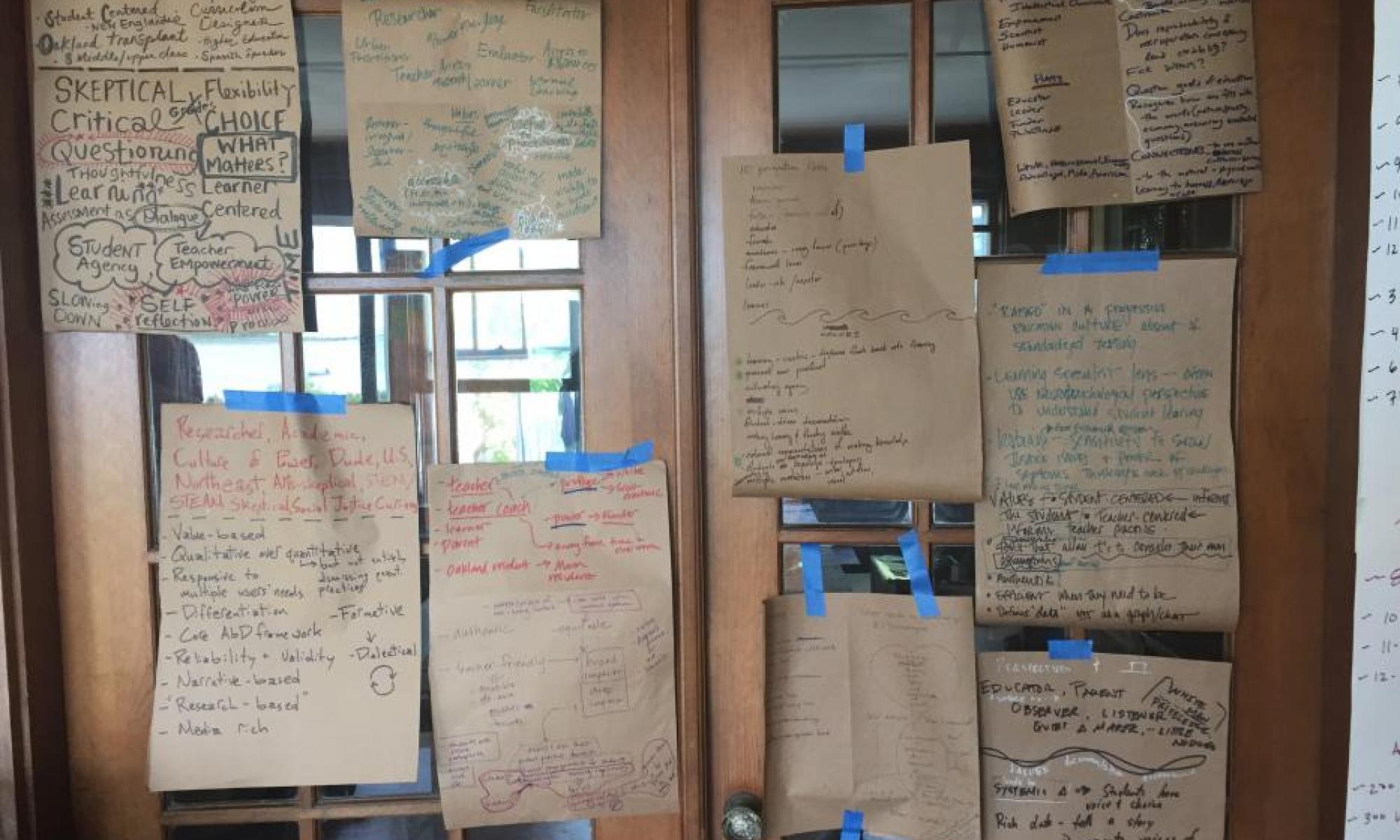
This practice of zeroing in on values—of articulating what is most important to an individual or a community—not only applies to program evaluation (as Bare notes) or to referencing key historical moments (as in the case of the tribal elders), but also to broader thoughts about education. Too often, the values that guide the creation of educational assessment and documentation tools are far removed from the teaching and learning environments in which they’re used, and might even be mysterious to the practitioners that use them. Even more often, learners are completely left out of the practices of documentation and assessment, and framed as subjects of research rather than as participants in the process. This phenomenon seems to run counter to notions of maker empowerment—what our Phase I research identified as a frequently-surfaced value of maker-centered learning approaches—as well as participatory design approaches that keep the engagement of learners at their core.
Prompted by these and other conversations we’ve had as a research team, we wondered how we might consider value-based documentation and assessment—how can we let our values for learning guide the creation of tools for documentation and assessment, and also make sure that these tools are are of value to teachers and learners alike, as well as other stakeholders?
Framing Our Stance on Documentation and Assessment
So what are the Agency by Design research team’s values in regard to the development of documentation and assessment? On a recent work retreat with the Oakland Leadership Team and representatives from the Abundance Foundation, we carefully considered our values, and how they might manifest as approaches and principles that could ground us in the work ahead. Through these conversations, the following value statements rose to the surface:
- We value AGENCY & MAKER EMPOWERMENT— Building on the Agency by Design project’s focus on maker empowerment as the core outcome associated with maker-centered learning, the documentation and assessment tools we develop should invite critical consideration and questioning from learners and educators themselves. They should help these core audiences to work within existing models of documentation and assessment, while also seeing these models as malleable.
- We value SENSITIVITY TO DESIGN and the MAKER CAPACITIES that support it—In support of our focus on agency and maker empowerment, we seek to create tools that help learners develop a sensitivity to the design of the objects and systems in their worlds by looking closely, exploring complexity, and finding opportunity. These tools should help learners be sensitive to the design of learning experiences and aware of the systems in which documentation and assessment practices are implemented.
- We value a FOCUS ON PROCESS—We seek to create processes and tools that consider the shape, flow, and journey of the learning process, rather than focusing in on one finite point or end product of a learning experience. This suggests a leaning toward formative tools that tell the story of a learning experience and inform future learning, rather than summative tools that look at the sum total of learning experiences as they come to a conclusion.
- We value ONGOING DIALOGUE—We seek to create tools that enable learners to be in dialogue with others—parents, educators, peers, and more—about their own learning journeys.
- We value FLEXIBILITY—Inspired by the highly dynamic and diverse range of work represented in the maker movement itself, we seek to create tools that are flexible and can be used across disciplines, grade levels, and throughout a variety of formal and informal learning environments. We further hope to develop documentation and assessment tools that are adaptable to a variety of purposes.
- We value the perspectives and experiences of LEARNERS & EDUCATORS— We seek to create tools that empower the learner and the educator within a teaching and learning experience. We recognize that focusing in on these two populations leaves off the list a huge number of stakeholders—parents, administrators, and policymakers, just to name a few. We do not intend to create tools that are deliberately un-helpful to these other stakeholders, but we want to keep both learners and teachers in mind as our primary audiences for this work.
This values stance emerged from our past four years of work on the project, which challenged us to articulate the primary outcomes and benefits of maker-centered learning based on what we saw happening in classrooms and what we heard from the educators we spoke with. But as we framed the stance, more questions rose to the surface: In what ways can we both work within and push on the system of current documentation and assessment practices? What are the tools that are needed and desired by practitioners in the field? Who are the missing voices in this dialogue? And where does grading and evaluation fit into this whole conversation? We’re not sure how we’ll answer all of these questions yet, but in line with our core values, the AbD team is inclined to develop maker-centered documentation and assessment tools that illustrate the rich learning and growth that happens in the maker-centered classroom, rather than one-size-fits-all grading tools.
Establishing Your Own Values
As we continue to craft our values stance over the coming months, we invite you to consider essential principles that guide your own work in documentation and assessment, within the learning and teaching contexts that are important to you.
What values rise to the surface for you? What do you most want the educators and learners in your own context to get out of documentation and assessment practices? And how might you hold yourself accountable to these guiding principles as you engage in the complexities and rigor of real-life teaching and learning environments? We’d be interested to hear how you, and other practitioners and researchers engaging with this work, grapple with these questions.
